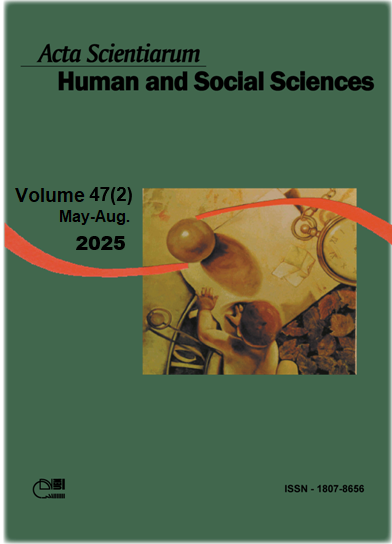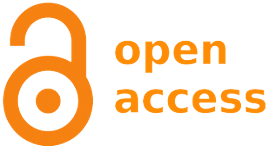Migration and childhood: social, linguistic and cultural aspects in border education
Abstract
This article aims to analyze the challenges and opportunities faced by migrant children in municipal schools in Foz do Iguaçu, based on data collected during the research study ‘Migration and childhood: social, linguistic, and cultural aspects in borderland education’. The research was conducted in three municipal schools: Arnaldo Isidoro de Lima, Ponte da Amizade, and Professora Elenice Milhorança. Data were collected through interviews with school principals, pedagogical observations, recess observations, and focus groups with students and teachers. The results indicate that the language barrier is the main challenge faced by migrant children, but they also highlight the importance of a welcoming and inclusive school environment for the adaptation of these students. The article concludes with recommendations to improve the inclusion of migrant children in schools, such as the need for teacher training and the appreciation of cultural diversity.
Downloads
References
Amato, L. J. D., & Lima, B. F. (2022). Educação na tríplice fronteira: crianças falantes de espanhol nas escolas municipais de Foz do Iguaçu. Criar Educação, 11(1), 155-169.
Azevedo, R. S., & Amaral, C. T. (2021). O trabalho do professor com crianças imigrantes e refugiadas: um estudo teórico do contexto brasileiro. Revista Profissão Docente, 21(46), 1-21. https://doi.org/10.31496/rpd.v21i46.1403
Bizon, A. C. C., & Camargo, H. R. E. (2018). Acolhimento e ensino da língua portuguesa à população oriunda de migração de crise no município de Sã Paulo: por uma política de travessia entre verticalidades e horizontalidades. In R. Baeninger, L. M. Bógus, J. B. Moreira, L. R. Vedovato, D. Fernandes, M. R. Souza, C. S. Baltar, R. G. Peres, T. C. Waldman, & L. F. A. Magalhães (Orgs.), Migrações Sul-Sul (pp. 712-726). Núcleo de Estudos de População ‘Elza Berquó’ – Nepo/Unicamp.
Bomfim, Z. A. C. (2010). Cidade e afetividade: estima e construção dos mapas afetivos de Barcelona e de São Paulo. Edições UFC.
Brasil. (2023). Censo escolar de Foz de Iguaçu. https://qedu.org.br/municipio/4108304-foz-do-iguacu/censo-escolar
Google (2025, 29 maio). Mapa da EMEF Arnaldo Isidoro de Lima. https://encurtador.com.br/zJ4AM
Google (2025, 29 maio). Mapa da EMEF Ponte da Amizade. https://encurtador.com.br/y435a
Google (2025, 29 maio). Mapa da EMEF Profa. Elenice Milhorança. https://encurtador.com.br/aqMyL
Hartmann, L. (2017). Desafios da diversidade em sala de aula: um estudo sobre performances narrativas de crianças imigrantes. Cadernos CEDES, 37(101), 45-64.
Molloy, S. (2018). Viver entre línguas. Relicário.
Resolução CNE/CEB nº 1 de 13 de novembro de 2020. (2020). Dispõe sobre o direito de matrícula de crianças e adolescentes migrantes, refugiados, apátridas e solicitantes de refúgio no sistema público de ensino brasileiro. Brasília, DF. http://portal.mec.gov.br/index.php?option=com_docman&view=download&alias=165271-rceb001-20&category_slug=novembro-2020-pdf&Itemid=30192
Santos, B. S. (2003). Reconhecer para libertar: os caminhos do cosmopolitanismo multicultural. Introdução: para ampliar o cânone do reconhecimento, da diferença e da igualdade. Civilização Brasileira.
Souza, D. F., Pimenta, R. W. S., & Orlandi, R. (2024). Educação para as relações étnico-raciais na educação infantil: implicações no fazer pedagógico. Nova Paideia - Revista Interdisciplinar em Educação e Pesquisa, 6(3), 276-287. https://doi.org/10.36732/riep.v6i3.536.
Tallei, J. I., & Amato, L. J. D. (2020). La formación permanente de docentes en escuelas de frontera sob el paradigma sentipensante. EDUCA-Revista Multidisciplinar em Educação, 7(17), 1284-1297. https://doi.org/10.26568/2359-2087.2020.4820
Copyright (c) 2025 Laura Janaina Dias Amato, Jesus Alberto Leon

This work is licensed under a Creative Commons Attribution 4.0 International License.
DECLARATION OF ORIGINALITY AND COPYRIGHTS
I Declare that current article is original and has not been submitted for publication, in part or in whole, to any other national or international journal.
The copyrights belong exclusively to the authors. Published content is licensed under Creative Commons Attribution 4.0 (CC BY 4.0) guidelines, which allows sharing (copy and distribution of the material in any medium or format) and adaptation (remix, transform, and build upon the material) for any purpose, even commercially, under the terms of attribution.
Read this link for further information on how to use CC BY 4.0 properly.























